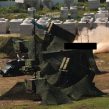
China-Taiwan Up Missile Ante
Publication: China Brief Volume: 10 Issue: 7
By:

In spite of thawing ties along the Taiwan Strait, Beijing is reportedly deploying more sophisticated missile systems in the coastal province across Taiwan. The director of Taiwan’s National Security Bureau (NSB)—the island’s principle intelligence agency—confirmed independent reports at a legislative hearing that China has deployed eight battalions of advanced S-300PMU2 long-range surface-to-air missiles in Fuqing county in Fujian province’s Longtian Military Airbase. According to NSB Chief Tsai Der-sheng, “It is impossible to deny that Beijing still sees military intimidation as an effective tool in preventing Taiwan from moving toward [de jure] independence,” adding that the number of missiles targeting the island has climbed to nearly 1,400 (Taiwan Today, March 18).
According to Tsai, the Taiwanese military obtained intelligence about the new Chinese missiles two years ago even before the beginning of cross-Strait direct flights, which serves as the first milestone of cross-Strait rapprochement under the Ma Ying-jeou administration. Tsai’s statement can be seen as an effort to downplay the news that sparked an uproar from the opposition-Democratic Progressive Party (DPP) in Taiwan’s parliament, which has been critical of the current Ma administration’s “pro-China” policy (Xinhua News Agency, March 30).
Following reports about this and other recent Chinese missile installations (e.g. Shandong in Northeastern China), a Taiwanese-weekly magazine, Next Weekly, revealed that the Taiwanese military plans to test its indigenously designed Hsiung Feng (Brave Wind) IIE surface-to-surface cruise missile in June and produce 80 units by the end of the year. This missile, with a range of 800 kilometers (497 miles), is capable of striking targets along coastal provinces within China (Next Weekly [Taiwan], March; China Times [Taiwan], March 23). In response to questions concerning the reported June test, Taiwan’s Deputy Defense Minister Andrew Yang neither confirmed nor denied the report, instead stating: "We [Taiwan] have the capacity to develop high-tech missiles. He added, “Research is an ongoing process. We need to consolidate our indigenous defense abilities and missiles are part of it". Further, Yang believed that developing cruise and surface-to-surface missiles was "a step in the right direction" (Liberty Times [Taiwan], March 30; Reuters, March 30).
According to China Times, in October 2007, Taiwan successfully test-fired a Hsiung Feng IIE missile, a land attack cruise missile variant with a range of 600 kilometers (373 miles), which was reportedly being deployed on a small scale (China Times, September 1, 2008). The same report claimed that Taiwan also successfully test-fired an advanced Hsiung Feng missile with a range of 800 kilometers in January 2008, which is believed to be another variant of Hsiung Feng IIE that at the time had not reached mass production stage (Ta Kung Pao [Hong Kong], September 1, 2008).
The Beijing authorities’ refusal to renounce the use of force, despite President Ma’s conciliatory overture since the Kuomingtang’s (KMT) landslide electoral victory in 2008 (a lead that has been ebbing with each by-election), has largely kept military relations between the two sides on ice. According to NSB Chief Tsai, “[Taiwan’s] intelligence indicates that Beijing has conducted a risk-benefit assessment of removing the missiles targeting Taiwan, but not surprisingly, policy on this issue is still yet to surface.” He continued, “regardless, even if the fixed-base missiles are withdrawn, mobile launchers can be positioned any time to pose a potential threat” (Taiwan Today, March 18). Tsai’s statements underscore one of the many concerns that Taiwan’s military have identified over engaging in cross-Strait confidence building measures with China. Moreover, at the legislative hearing where Tsai delivered a NSB report, KMT Legislator Chang Hsien-yao pointed out that China had not relaxed its military preparedness against Taiwan. Chang noted that China had conducted 31 military drills and exercises in 2009, 74 percent of which involved scenarios targeting Taiwan (Taiwan Today, March 18).
According to Tsai, the Russian-made S-300PMU2 deployed along the Fujian coastline is designed to counter U.S. and Indian ballistic missiles and should not be seen as an offensive threat (Taiwan Today, March 18; Radio Taiwan International, March 17). Yet, the S-300PMU2 long-range surface-to-air missiles have a range of 200 km, so Taiwanese fighters entering airspace in the northern Taiwan Strait could be susceptible to its attack.
As China continues its acquisition, development and deployment of new ballistic and cruise missile systems, the region appears to be slowly edging toward a missile race as China’s neighbors equip themselves with both offensive and defensive systems to hedge against Beijing’s growing array of strategic weapons. Current developments in Taiwan appear to follow the policy reversal set in motion at the onset of the Ma administration, which discontinued any additional research in developing anti-ship missiles or surface-to-surface missiles that have a range beyond 1000 kilometers (621 miles) (See “Amid Warming Ties Taiwan Scraps Plans for Developing Long Range Cruise Missiles,” China Brief, September 3, 2008). Yet, in light of a lack of reciprocal response in China’s missile deployments across the Taiwan Strait, which has in fact increased in the past couple of years, the balance of power between the two sides is rapidly changing. Deputy Minister Yang’s open-ended response about Taiwan’s missile ambitions raises the question about the Ma administration’s policy toward future missile developments.





